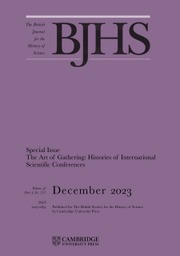Segregated Species argues that racial segregation, pest control and the sciences behind them ‘were closely intertwined in rural South Africa from the creation of the country in 1910 to the dawn of apartheid in 1948ʹ (p. 1). In another era or with a different publisher, the title of this book could possibly have been Pests and Settlers: Knowledge and Boundaries in South Africa, 1910–1940. Central to this book is not so much an ‘animal-sensitive’ history of pests in South Africa, but rather that settler strategies and ideologies vis-à-vis pests, whether human or otherwise, were but variations on a scale. Indeed, pest control strategies were redeployed to manage people and vice versa. In addition, settlers blamed colonized people for the presence of pests and used metaphors of vermin to dehumanize them. At the outset, it is important to note that Skotnes-Brown does not attempt to equate or analogize racialized humans and pest animals, nor does he seek to ‘compare the subjective experiences of humans and animals’. Instead, he seeks to ‘draw connections between settler strategies and ideologies of human–animal categorization, conservation, and control’ (p. 12). In this, Skotnes-Brown is successful and his work has set a new standard, not only in Southern African history, but in all histories dealing with the relationship between people and animals, in which both people and animals can come to be defined as pests.
The work is based on five substantive chapters, each of which deals with specific organisms that were defined as pests in South Africa. Every chapter is introduced by a ‘fictional interlude, grounded in historical evidence’ (p. vii). Thus Chapter 1, which deals with elephants in the Eastern Cape, is preceded by an account of the death of one Farmer Vermaak, trampled underfoot by an elephant named Blinkvoet (Shiny Foot) (pp. 26–7). The chapter outlines the transformation of elephants from pests hunted to near extermination to protected animals living within a sheltered segregated zone that shielded them from ‘civilization’ (p. 64). Intriguing are the parallels that Skotnes-Brown draws to the fore between people and elephants, such as when an Eastern Cape letter writer, bearing the nom de plume Anti-Slaughter, likened the Herero of Namibia to the fate of the Addo elephants (p. 50). A few years later, the politician and medical practitioner W.P. Steenkamp would write a polemic, Is the South-West African Herero Committing Race Suicide? (1943), and, as with Addo’s elephants, call for protected separate reservations.
Chapter 2 deals with trypanosomes, protozoa that reside in animals and are transmitted by tsetse flies. Trypanosomes can bring about the diseases known as nagana and sleeping sickness, collectively referred to as trypanosomiasis. In South Africa trypanosomes that brought about nagana existed in Zululand. As with the elephants of Addo, trypanosomes failed to respect the boundaries between ‘wild’ spaces and settler farms and stock (p. 68). Trypanosomes effectively transformed ‘big game’ into vermin (p. 68) and brought about epistemological conflicts between wildlife protectionists and cattle keepers. Wildlife protectionists argued that ‘big game’ kept nagana contained in circumscribed areas, and that exterminating game would lead to the spread of the disease. In the event, in August 1920 the ‘Great Game Drive’, took place over a period of five days, in which thousands of people killed approximately 3,000 animals but failed to eradicate nagana. Central to this chapter is the interplay between Zulu, settler and scientific evidence.
Birds, and to a lesser extent insects, against which ‘settlers could not create borders within the air’ (p. 105), form the subject of the third chapter. The chapter focuses on ‘economic ornithology’, which sought to distinguish between beneficial and harmful birds in relation to settler agrarian economies. Skotnes-Brown argues that as economic ornithology sought to include useful wild birds ‘into visions of the progressive, modern farm, they simultaneously attempted to limit insect, rodent, African, and “poor white” agency in these spaces’ (p. 108). This is the most ambitious and rewarding chapter of the book, particularly as it builds on the insights of earlier work by Nancy Jacobs and details the interplay between scientific, settler and African ontologies of birdlife.
In the 1920s and 1930s bubonic plague, or rather the fear of ‘veld plague’, was used as justification for an all-out assault on ‘veld rodents’ in South Africa by the Public Health Department established in 1919, and forms the subject of Chapter 4. Yersinia pestis, the pathogen that causes plague, found its host in fleas and rodents that generally lived underground and ‘could never learn to respect boundaries between human and wild animal spaces’ (p. 149). Hidden and moving underground, the carriers of Yersinia pestis were perceived as a threat to settler society as a whole. The chapter details public-health officials’ attempts to track and trap rodents infected with Yersinia pestis. In tackling the plague, racially motivated influx control and quarantine regulations came to be applied that targeted black South Africans.
Following from the above, Skotnes-Brown expresses his discomfort with the fact that ‘in segregationist South Africa … strategies mobilized to protect, restrain, or contain animals considered to be pests were also applied to humans’ (p. 195). This comes most explicitly to the fore in Chapter 5, in which the establishment of the Kalahari Gemsbok National Park is discussed in the context of the extirpation and extermination of San, who were seen as vermin. In so doing, the chapter ‘explores relationships between “vermin beings,” and ultimately how strategies of game and human management dovetailed in the Kalahari’ (p. 198). Fascinatingly, boundaries between humans and animals were seen as porous by San, but in settler imagination ‘San were seen as primitive humans who resided on the borderlands of animal and human spaces and whose appearance, culture, and lifestyle muddled the boundary between these two categories’ (p. 198) – a muddling that justified the previous and subsequent actions taken against San.
Segregated Species shows that, to truly understand the history of South Africa and colonial history as a whole, we must examine how both animals and humans were treated.


